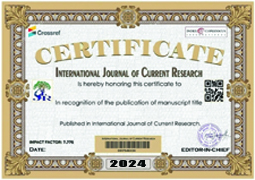Winged bean belongs to the legume family Fabaceae, sub-family of Papilionoideae, tribe Phaseoleae, genus Psophocarpus and species Psophocarpus tetragonolobus. Psophocarpus tetragonolobus is a twining, perennial herb that’s characterized by its tuberous roots and its winged pods. Psophocarpus comes from a Greek word that means “noisy fruit.” The winged bean also known as cigarillas, goa bean, four-angled bean, four-cornered bean, manila bean, princess bean, star bean, kamrangi bean, pea, dragon bean, and is a tropical herbaceous legume plant. There are two types of varieties viz., 1) Day-Neutral - Blooms during longer days, allowing out of season production. 2) Pang Daeng Nawk – Short day-length variety from northern Thailand, produces long, tender pods (30 cm). Winged bean is a climbing plant similar in appearance and growth habit to pole beans. Winged beans are also known as Goa bean or princess bean. As with other legumes, these bean plants can help add nitrogen to your soils. They are propagated by seed, but stem-cutting under mist may also be used for propagation. There is a serious germination problem with winged bean seeds, but germination can be improved by scarification. Winged bean is adapted to tropical conditions and is grown in Southeast Asia, Papua New Guinea, various Pacific Islands, and Africa. The tender pods are the most widely consumed part of the plant, especially throughout Asia, but the leaves, stems, flowers, seeds, and tuberous roots are all nutritionally valuable and are used as food. Winged bean is another of the legumes with elevated seed oil content; varieties typically average 15% oil, with protein levels of 30–37%. The tuberous roots are a good source of energy in the form of starch, and they contain 8–10% protein. Many tuberous legumes are underutilized, with little or no research attention given to their genetic improvement, thereby limiting their potential to support food, nutritional, and economic security. Understanding and exploiting the potential of winged bean will enhance its role in regions where it can be cultivated. This crop is utilized as seeds and as tuberous roots, as both have high nutritional value. Winged bean is popularly known as “One Species Supermarket” for its nutrient-dense green pods, immature seeds, tubers, leaves, and mature seeds. This underutilised crop has potential beneficial traits related to its biological nitrogen-fixation to support low-input farming. Reliance on a handful of “major” crops has led to decreased diversity in crop species, agricultural systems and human diets. To reverse this trend, we need to encourage the greater use of minor, “orphan”, underutilised species. The crop originated in South-East Asia or perhaps Papua New Guinea. It is widely grown in hot humid equatorial countries throughout Southeast Asia and East Africa, and is an important leguminous vegetable crop in Thailand, Burma, Laos, Malaysia, Vietnam, Indonesia, Bangladesh, Sri Lanka, Ghana, and Nigeria. Although the young pod of the winged bean is the most popularly consumed part, the rest of the plant parts are also edible when appropriately prepared. In this review article on Origin, Domestication, Taxonomy, Botanical Description, Genetics and Cytogenetics, Genetic Diversity, Breeding, Uses, Nutritional Value and Health Benefits of Winged Bean are discussed.





